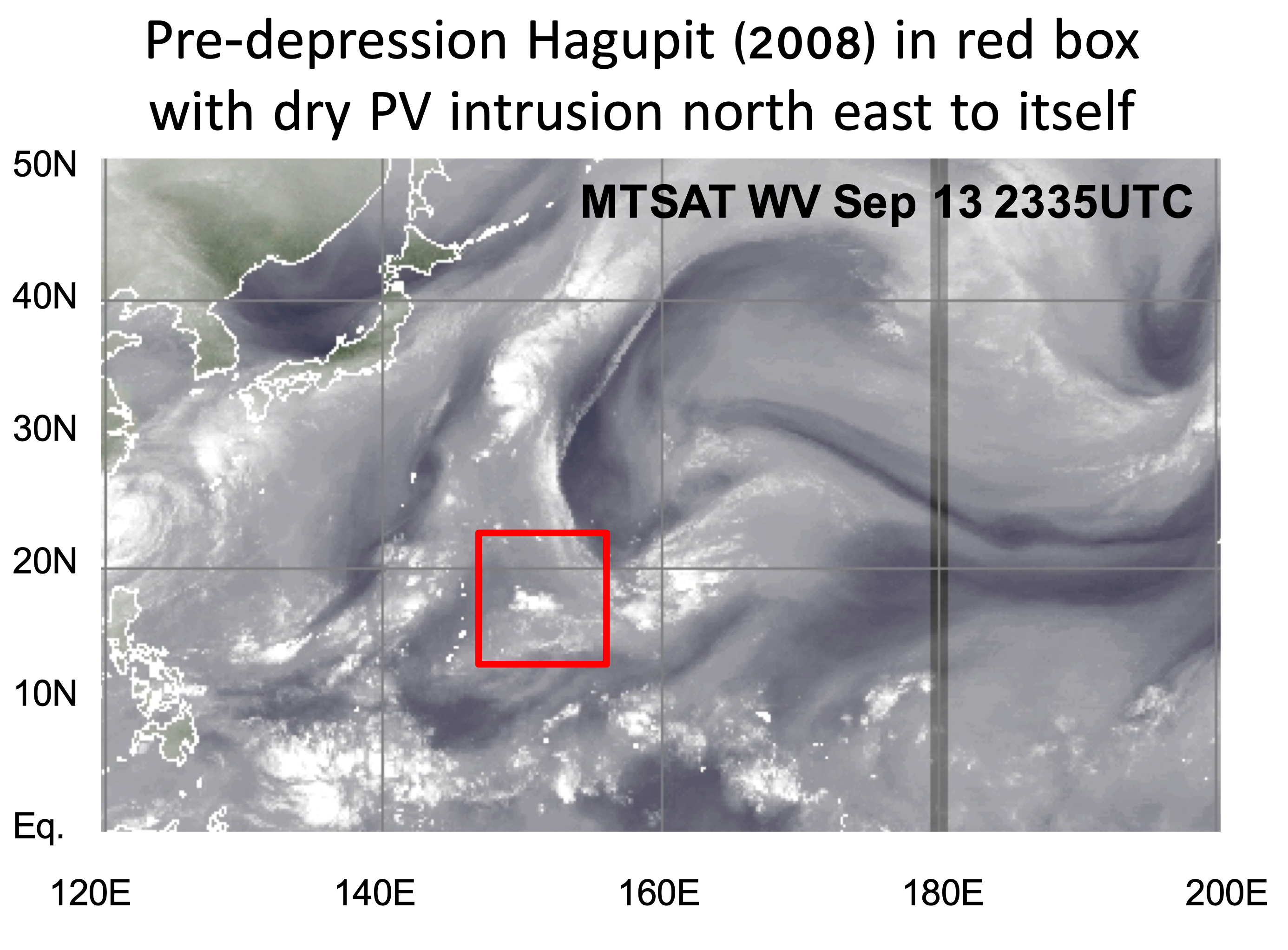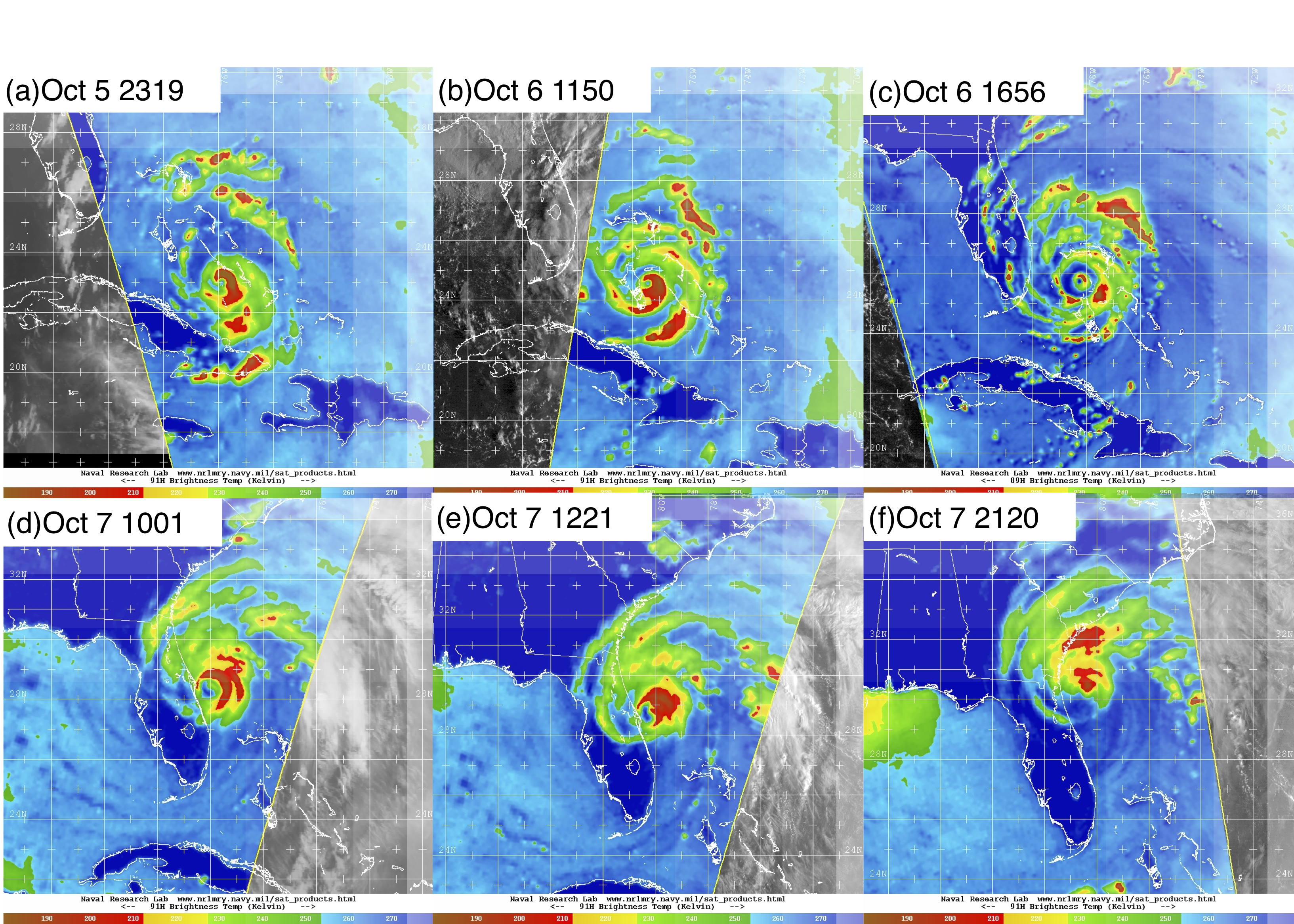How the wave pouch and vertical wind shear interactions play important roles in cyclongenesis in multi-scales?
Group Members: C. Chelsea Nam , Michael Bell
Tropical cyclogenesis of pre-depression Hagupit was delayed while it interacted with upper-level trough, experiencing strong VWS. For the downscale cascade from the synoptic to meso-alpha scale, our analysis showed that pre-depression Hagupit was significantly affected by the strong northwesterly vertical wind shear. However, Hagupit survived through the hostile, strongly sheared environment, and eventually developed into a tropical cyclone after it escaped from the influence of upper-level trough. The upscale cascade from the persistent deep convection and its vorticity amplification through vortex tube stretching was a key process that enabled the pouch to persist even under 20 m/s VWS. We highlight the roles of localized low-level shear and cumulus congestus clouds inside the wave pouch as the localized vertical vorticity generated from the convective cells is aggregated through a vortex merger process inside the marsupial pouch.


